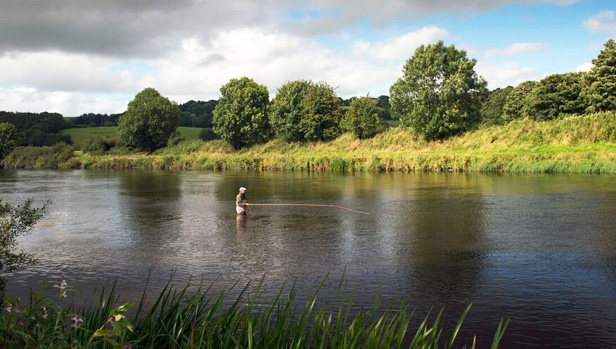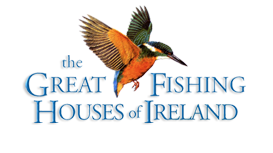

The Rivers
River Suir
Season:
Salmon: 1 February to 30 September
Sea-trout: 1 February to 30 September
Brown Trout: 1 March to 30 September
The River Suir (pronounce ‘sure’) rises in the Devil’s Bit Mountain in Co Tipperary and flows south and then north and east to join the Barrow and the Nore in Waterford Harbour. It is 115 miles long and together with its tributaries it drains a total catchement of 1,394 square miles.
The main river lies entirely on limestone except for a few miles at the source and all the tributaries are on limestone, with the exception of the Nire, the Clodiagh and the upper reaches of the Multeen, which comes in from the west near Cashel.
The flow in the main river is characterized by deep and shallow glides interrupted by shallow riffles. Its width increases as it proceeds downstream and the sequence of relatively shallow glide and riffle is maintained.
This combination of a rich limestoe base and huge areas of relatively shallow glides makes the Suir ideal for the production of brown trout. There is massive recruitment of young trout from the extensive system of tributaries and the trout survive and grow in what is a near-perfect environment. They have few predators in the form of pike, and coarse fish are almost entirely absent.
The Suir is one of Ireland’s premier brown trout fisheries. Only a handful of rivers can compare with it in terms of numbers of trout produced per square yard and I doubt if any river can equal it in terms of the overall numbers of trout that it produces and that are available to the angler.
The average size of the trout ranges from ¾ to 2 lb in different areas, depending on the habitat. Their lifespan is relatively short and few trout exceed 4 years of age.
Fly Life
The relative uniformity of the nature of the river-bed type means that the dominant fly hatches are more or less similar over the entire length of the river, with the exception of the mayfly, which is found only between Camus Bridge and Golden, and stoneflies, which are confined to fast shallow sections. Otherwise, from March to late April, there are large dark olives around midday. From late April to mid-May, there are medium olives, iron blues and stoneflies – early brown. From mid-May to mid-June, there are alders, medium olives, reed smuts and midges, mayfly, pale wateries, blue-winged olives, caenis, hawthorn, black gnat, yellow stoneflies and various sedges, including murroughs and grey flags. From mid-June to the end of July sees bule-winged olives, pale wateries and pale evening duns, small dark olives, a variety of sedges (including murrough, cinnamon sedge, red sedge and silverhorns) and ants on occasions. August has similar hatches. The blue-winged olive is very important in the evening, as are various sedges, and trout take small black and green midges by day. In September the trout take blue-winged olives during the day and on mild evenings. Midges, olives and small sedges and the cinnamon sedge are also important.
The peak of the trout fishing is from early May to mid-June for day-long fishing, at dusk for the rest of the summer and during the day and evening in September. At these times, there is usually no shortage of feeding trout.
Body waders and a wading staff are practically essential for an angler when fishing the main channel of the Suir. In most areas, the bottom is firm and consists of stone, gravel or sand. This is a big river with a strong current and anglers should take due care when wading.
Salmon Fishing
The best of the salmon fishing on the River Suir is said to extend downstream from Ardfinnan towards Carrick-on-Suir. The fishing is controlled mainly by either angling clubs or syndicates and very little information is available on the quality of the fishing. The river still produces occasional spring salmon and is thought to get a fair run of grilse. In some seasons, when conditions are right, it gets a good run of 12 – 18 lb salmon. The Suir has the distinction of producing Ireland’s record rod-caught salmon. It weighed 57 lb and was taken on a fly by Michael Maher in 1874. There is very little salmon fishing available to the general public and the best fishing on what is available is in June and September.
Excerpts taken from "Trout & Salmon Rivers of Ireland, an angler's guide" by Peter O'Reilly.

